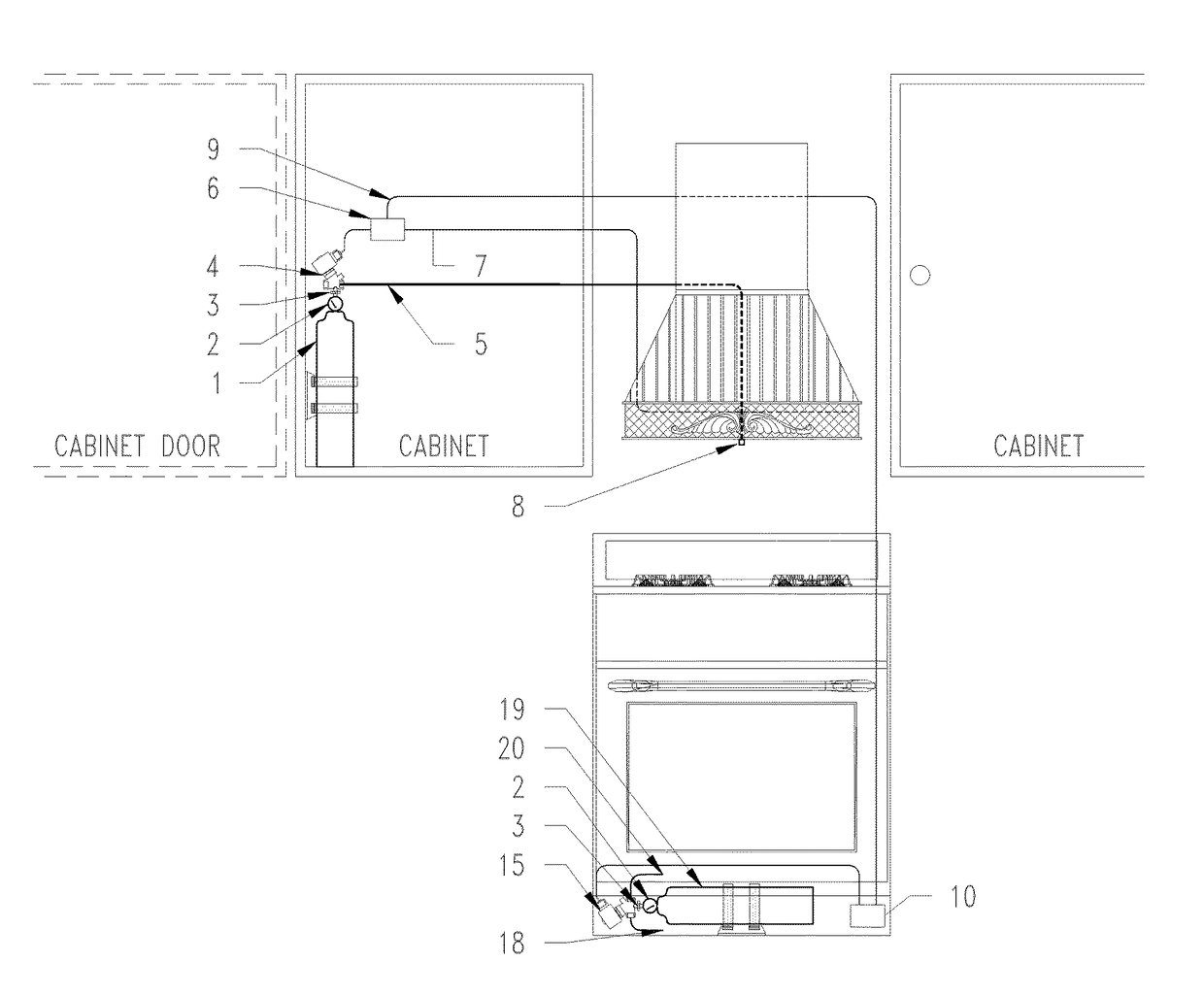Fire suppression device
a fire suppression device and fire suppression technology, applied in boring tools, medical science, etc., can solve the problems of domestic fires and related injuries, stoves are the second most common cause of home fires, and consequent injuries and deaths, and achieve the effect of saving li
- Summary
- Abstract
- Description
- Claims
- Application Information
AI Technical Summary
Benefits of technology
Problems solved by technology
Method used
Image
Examples
Embodiment Construction
[0036]The present invention will be understood from the following detailed description of preferred embodiments, which are meant to be descriptive and not limiting. For the sake of brevity, some well-known features, methods, systems, procedures, components, circuits, and so on, are not described in detail.
[0037]Nearly half all of U.S. home fires originate in the kitchen and involve cooking equipment. 38% of home fire injuries and 15% of home fire deaths result from such fires. [NFPA 2006-2010 “Home Fires involving Cooking Equipment”, November 2012].
[0038]Amongst such kitchen fires, 58% start on a range or cook top. Given the total number of reported fires in the U.S. involving cooking equipment in the 5 year period 2006-2010 of 157,300, and the average cost to repair / restore a house fire of $49,000, one arrives at over $1B USD lost to range fires every year in the U.S. alone.
[0039]The present invention provides a method for sensing and suppressing such fires.
[0040]With reference to ...
PUM
 Login to view more
Login to view more Abstract
Description
Claims
Application Information
 Login to view more
Login to view more - R&D Engineer
- R&D Manager
- IP Professional
- Industry Leading Data Capabilities
- Powerful AI technology
- Patent DNA Extraction
Browse by: Latest US Patents, China's latest patents, Technical Efficacy Thesaurus, Application Domain, Technology Topic.
© 2024 PatSnap. All rights reserved.Legal|Privacy policy|Modern Slavery Act Transparency Statement|Sitemap



